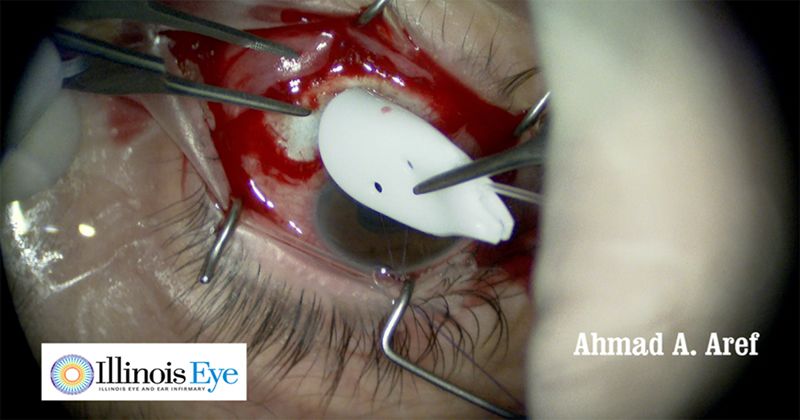BLOG: Pearls for inferonasal aqueous shunt implantation
Over the past decade, the frequency of aqueous shunt surgery has risen dramatically.
Studies have shown us the power of these devices in earlier and less refractory glaucomatous disease states. Along with rising rates of usage, we can expect to see more patients who have failed initial aqueous shunt surgery over time. Major surgical clinical trials show that we can expect a failure rate of 30% to 50% within 5 years of initial aqueous shunt implantation.

Figure 1. Intraoperative photo demonstrating folding of the ClearPath 250 aqueous shunt for placement in the inferonasal quadrant.
For many patients, the next step after initial aqueous shunt failure will be placement of a second drainage implant. Glaucoma surgeons have become experts in space allocation and often must decide where to place this second implant. My preference is for the inferonasal quadrant. Placement of the second aqueous shunt in the inferonasal quadrant minimizes risk for impingement on the oblique muscles and subsequent mechanical strabismus. Some of the following pearls may help one succeed with implant placement in this quadrant.

Once one has decided on location, the next consideration is the type of implant to be placed. One must consider proximity of the posterior aspect of the device to the optic nerve in this scenario. For that reason, implants with a shorter anterior-to-posterior length may be preferable, especially in eyes with shorter axial length. My selection usually comes down to the Ahmed ClearPath 250 (New World Medical) or the Baerveldt glaucoma implant (Johnson & Johnson Vision). One advantage of the Ahmed ClearPath device is its flexible nature, which allows for folding into a tight inferonasal conjunctival pocket (Figure 1). This folding technique causes less stress to the overlying conjunctiva in this region. Another challenge in the inferonasal quadrant is needle entry into the anterior chamber (or sulcus space or pars plana) when creating the sclerotomy for tube insertion. This step can be difficult in patients with a more prominent nose. One technique I find helpful in this scenario is double-bending a 23-gauge needle. This more compact needle configuration allows for easier intraocular entry. Success rates after a second aqueous shunt are high, aiding in IOP control and stabilization of glaucomatous disease.
Collapse
